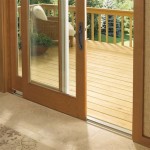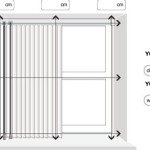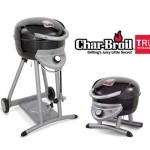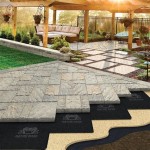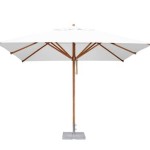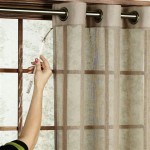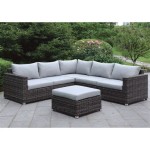Creating the Perfect Ambiance: Choosing Patio Chairs Around a Fire Pit
A fire pit serves as a focal point for outdoor gatherings, providing warmth, light, and a natural gathering space. However, the experience is greatly enhanced by the selection of appropriate patio chairs. Choosing the right seating arrangement requires careful consideration of various factors, including comfort, durability, style, and safety. The objective is to create a welcoming and functional outdoor living area that encourages relaxation and conversation.
The type of patio chairs selected directly impacts the overall functionality and aesthetic of the fire pit area. The ideal chair will not only provide a comfortable place to sit but also complement the design of the fire pit and the surrounding landscape. Thoughtful planning ensures the space is both inviting and practical for regular use.
Considering Material and Durability for Longevity
The material composition of patio chairs is a paramount consideration, directly impacting their lifespan and suitability for outdoor use. Exposure to the elements, including sunlight, rain, and temperature fluctuations, demands materials that can withstand these conditions without significant degradation. Several materials are commonly used, each offering distinct advantages and disadvantages.
Wood: Wood offers a natural, classic aesthetic that blends well with most outdoor environments. Teak, cedar, and redwood are popular choices due to their inherent resistance to rot and insects. However, wood requires regular maintenance, including cleaning and sealing, to prevent warping, cracking, and fading. Depending on the species and treatment, wooden chairs can provide years of comfortable and stylish seating around a fire pit.
Metal: Metal chairs, particularly those made from aluminum or wrought iron, are known for their durability and strength. Aluminum is lightweight and rust-resistant, making it a practical choice for areas with frequent rain. Wrought iron, while heavier and more robust, requires regular painting or powder coating to prevent rust. Metal chairs often offer a contemporary or industrial look, and can be paired with cushions for added comfort.
Resin/Plastic: Resin and plastic chairs are a budget-friendly option that are resistant to water and UV rays. These materials are easy to clean and require minimal maintenance. While not as aesthetically appealing as wood or metal, resin and plastic chairs are available in a variety of styles and colors, making them a versatile choice for casual outdoor settings. Recycled plastic options offer an environmentally conscious alternative.
Wicker/Rattan: Wicker and rattan chairs provide a comfortable and stylish seating option, often associated with a relaxed, bohemian aesthetic. Natural wicker is best suited for covered patios, as it is susceptible to moisture damage. Synthetic wicker, made from durable plastic materials, offers the look of natural wicker with increased weather resistance. These chairs often require cushions for added comfort and support.
The choice of material ultimately depends on the desired aesthetic, budget, and the level of maintenance the user is willing to undertake. Durable materials ensure that the chairs remain in good condition, providing comfortable seating around the fire pit for years to come.
Prioritizing Comfort and Ergonomics
While durability and aesthetics are important, the primary function of patio chairs is to provide comfortable seating. Ergonomic design plays a crucial role in ensuring users can relax and enjoy their time around the fire pit without discomfort. Factors such as seat height, back support, and cushioning should be carefully evaluated.
Seat Height: The ideal seat height allows users to comfortably place their feet flat on the ground. A seat that is too high or too low can lead to discomfort and fatigue. Standard seat heights for dining chairs typically range from 17 to 19 inches, while lounge chairs may have a lower seat height. Consider the height of the fire pit and any surrounding tables when determining the appropriate seat height.
Back Support: Adequate back support is essential for maintaining good posture and preventing back pain. Chairs with contoured backrests that conform to the natural curve of the spine are ideal. High-backed chairs provide more support for the upper back and shoulders, while low-backed chairs offer a more casual and minimalist look. Adding cushions or pillows can enhance back support and overall comfort.
Cushioning: Cushions significantly enhance the comfort of patio chairs, particularly those made from hard materials like metal or wood. Look for cushions made from weather-resistant fabrics that are resistant to fading, mildew, and water damage. High-density foam provides better support and retains its shape longer than low-density foam. Removable cushion covers facilitate easy cleaning and maintenance.
Armrests: Armrests provide additional support for the arms and shoulders, allowing users to relax more comfortably. The height and width of the armrests should be appropriate for the user's size and body type. Some chairs offer adjustable armrests, allowing for a customized fit. Armrests can also serve as a convenient place to rest drinks or snacks.
When possible, it is advisable to test out patio chairs before purchasing them to ensure they provide the desired level of comfort and support. Consider the needs of all potential users, including those with mobility issues, when selecting chairs. Prioritizing comfort ensures that the fire pit area is a welcoming and enjoyable space for everyone.
Maintaining Fire Safety and Spatial Awareness
Safety is of paramount importance when arranging patio chairs around a fire pit. Maintaining a safe distance between the chairs and the fire pit, along with considering the surrounding environment, helps prevent accidents and injuries. Adhering to fire safety guidelines ensures that the fire pit area can be enjoyed responsibly.
Safe Distance: A general rule of thumb is to maintain a distance of at least three feet between the fire pit and any seating. This distance allows for comfortable movement around the fire pit and reduces the risk of burns from stray sparks or embers. The specific distance may need to be adjusted depending on the size and intensity of the fire pit.
Chair Placement: Arrange the chairs in a circular or semi-circular pattern around the fire pit to encourage conversation and create a sense of intimacy. Avoid placing chairs directly in the path of prevailing winds, as this can cause smoke to blow into the faces of users. Ensure that there is enough space between chairs for people to move freely without bumping into each other.
Ground Surface: The surface surrounding the fire pit should be non-combustible, such as gravel, stone, or concrete. Avoid placing chairs on flammable materials like grass, wood decking, or dry leaves. Consider using a fire-resistant mat beneath the fire pit to protect the underlying surface from heat and embers.
Overhead Clearance: Ensure that there is adequate overhead clearance above the fire pit to prevent branches or other flammable materials from catching fire. Trim any overhanging trees or shrubs that could pose a fire hazard. Be mindful of low-hanging structures, such as awnings or pergolas, that could be damaged by heat or smoke.
Fire Extinguisher: Keep a fire extinguisher or a bucket of water nearby in case of emergencies. Familiarize yourself with the proper use of a fire extinguisher before using the fire pit. Regularly inspect the fire extinguisher to ensure it is in good working order.
By prioritizing fire safety and spatial awareness, users can create a secure and enjoyable environment around the fire pit. Responsible use and proper maintenance of the fire pit and surrounding area are essential for preventing accidents and ensuring the safety of all users. This includes reminding guests to avoid leaving flammable items like blankets or clothing too close to the fire.
In addition to these key points, consider the storage of the patio chairs during periods of inclement weather or when the fire pit is not in use. Stackable chairs or chairs with covers can help protect them from the elements and prolong their lifespan. The overall goal is to create a fire pit area that is both aesthetically pleasing and functional, while also prioritizing the safety and comfort of everyone who uses it.

The Perfect Complement To Any Fire Pit Outdoor Furniture Masonry Magazine

15 Best Outdoor Fire Pit Chair Bench Ideas For Cozy Fireside Seating Garden Landscaping

15 Best Outdoor Fire Pit Chair Bench Ideas For Cozy Fireside Seating Area

Outdoor Fire Pit Seating Ideas For Your Living Space

Our Round Patio Fire Pit With Adirondack Chairs Thrifty Decor Chick Diy And Organizing

Our Round Patio Fire Pit With Adirondack Chairs Thrifty Decor Chick Diy And Organizing

11 Best Fire Pit Chairs Of 2024 Outdoor Furniture Seating

Keys To Arranging Patio Furniture Around Your Fire Pit Creative Living

Phi Villa 5 Piece Rattan Patio Fire Pit Set 4 C Spring Chairs With High In Back Thd5 001 002 The Home

Ideas For Fire Pit Seating Backyard Seatingidea Outdoor Area


